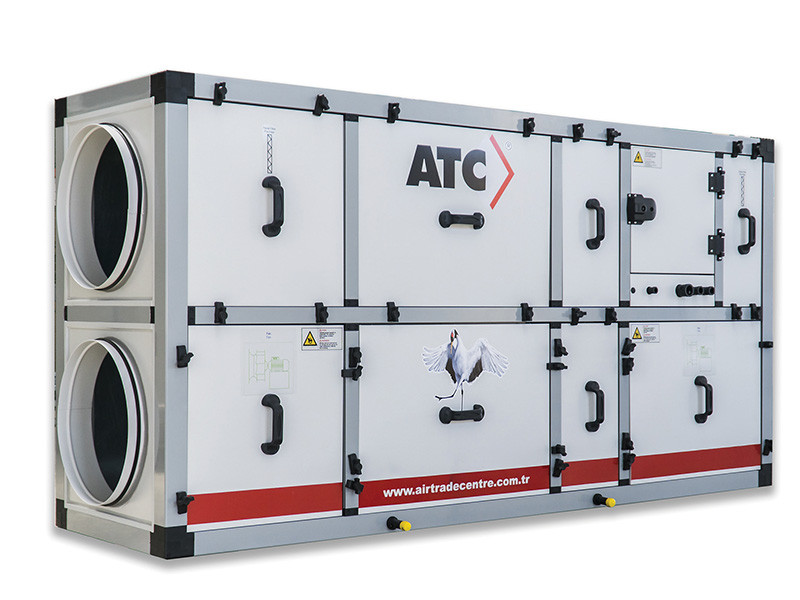Interview with DTK

DTK Röportajı
It all starts with improving the architecture and engineering designs, quality of constructions, and intelligent operation of the buildings.
What is the way to increase productivity in HVAC sector, please share your opinion?
Building efficiency must be considered as improving the performance of a complex system designed to provide occupants with a comfortable, safe, and attractive living and work environment. It all starts with improving the architecture and engineering designs, quality of constructions, and intelligent operation of the buildings. Taking this in mind, the opportunities for improved efficiency are enormous. By 2030, building energy use could be cut more than 20% using technologies known to be cost effective today. Much higher savings are technically possible by innovative technologies we are today still not aware about and or do not use due to high costs. Generally, we can assume that 35% of energy consumption in buildings come from are heating, ventilation, and air conditioning. As this is a major part of costs, it gives HVAC equipment suppliers opportunities to be a part of improving and reducing by offering devices, which are intelligent as a part of integrated building systems. As an example, we can say high-efficiency, easy to install, plug and play units that support the reduction or elimination of the use of refrigerants, which also help to reduce emissions. When the unit is intelligent and equipped with the necessary sensors and controls and in communication with e.g, sensors that adjust light levels to occupancy and daylight, this all together will support to lower cost to install and reduce the energy significant.
What do you think about the efficiency of energy using and energy saving in the construction industry? From your opinion what should be done in this area?
As explained already above: ‘’It all starts with improving the architecture and engineering designs, quality of constructions, and intelligent operation of the buildings’’.
Buildings last for decades, so it’s important to consider technologies that can be used to retrofit existing buildings as well as new buildings. Energy use in buildings depends on a combination of good architecture and energy systems design and on effective operations and maintenance once the building is occupied. Buildings should be treated as sophisticated, integrated, interrelated systems. It should also be understood that different climates probably require different designs and equipment, and that the performance and value of any component technology depends on the system in which it is embedded. Next to the HVAC equipment, which is our main interest, also the performance of the lighting devices impact the energy efficiency, correct usage of lighting controls will have a reducing net impact on energy use, which then affects building heating and cooling loads. Source: Quadrennial Technology Review148
How do you evaluate the developments according the energy economy in the fields of investment, design and manufacturing?
Manufacturing’s role is changing. The way it contributes to the economy shifts as nations mature: in today’s advanced economies, manufacturing promotes innovation, productivity, and trade more than growth and employment; we can learn from this and principally should follow this trend too. While many entrepreneurs do have a long-term vision and would wish to develop and invest in new innovative ways, unfortunate it is often a struggle and they are forced to consider short-term gains only, which limits their interest in investments into innovation for the future. Let me explain, as entrepreneur you need to be able to trust in your surrounding and that your investment is safe, we in our surrounding unfortunate fail often in this primary task. The cause of this is that our regulations are too limited and our controls are not working well. While many economies support innovations very heavily, SME’s struggle in our market to receive the needed full support. Although we see many hurdles on our way to be innovative, I must admit that this does not stop many and so we keep investing. Since the beginning of 2019 we have introduced our products to mainly the West European markets and started to see the success of this. At the moment I am writing this article and being in the middle of a pandemic outbreak, all seems more difficult, but it also has open new opportunities. It is forcing us to think different and we consider new technologies to be used in our units to help fight the spread.
As ATC Do you have new units or new projects accordingly?
As here above mentioned, the outbreak of COVID-19, has forced us to think different. While we have several products under development (supporting energy efficiency & emission reduction) and hope to be able to launch them during the 2nd part of this year, we also started to investigate the usage of technologies for air purification, this to support the limitation / full removal of virus to enter buildings. As example, currently we are working closely with our US & Canadian partner for energy efficient units fully equipped with air purification technology to supply to the pharmaceutical sector:
-
- Remove germs from the air (microbes, bacteria, viruses)
- Preventing odor nuisance (from indoor or outdoor air)
- Remove particulate matter from the air (from indoor or outdoor air)
- Filtration optimization
- Energy savings
- Indoor air quality optimization (ISO class increase)
- Remove building dust from the air

DTK Röportaj
During 2019 we have finished our innovative Light Commercial Heat Recovery Unit named Mergen and launched by March at the ISH Exhibition in Germany. Thanks to its strong futures (high efficiency, low energy consumptions, plug & play, easy regulation, ERP 2018 compatible), the interest for partnership has been overwhelming since then.